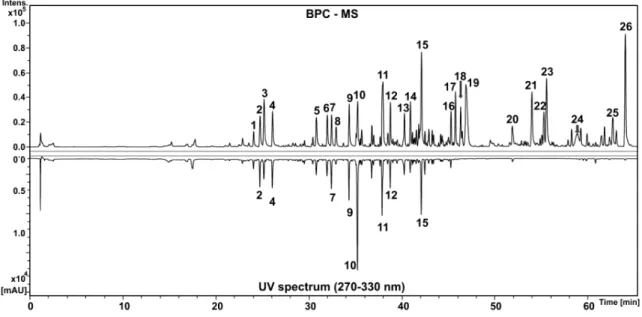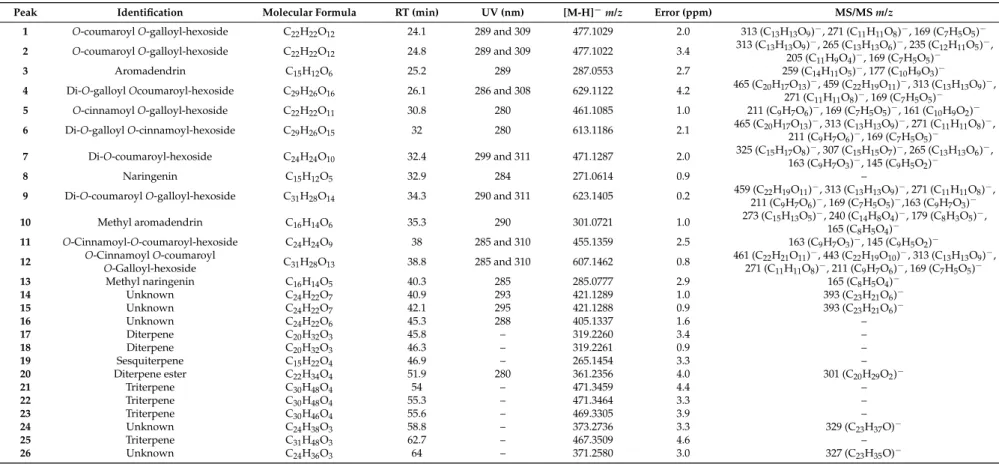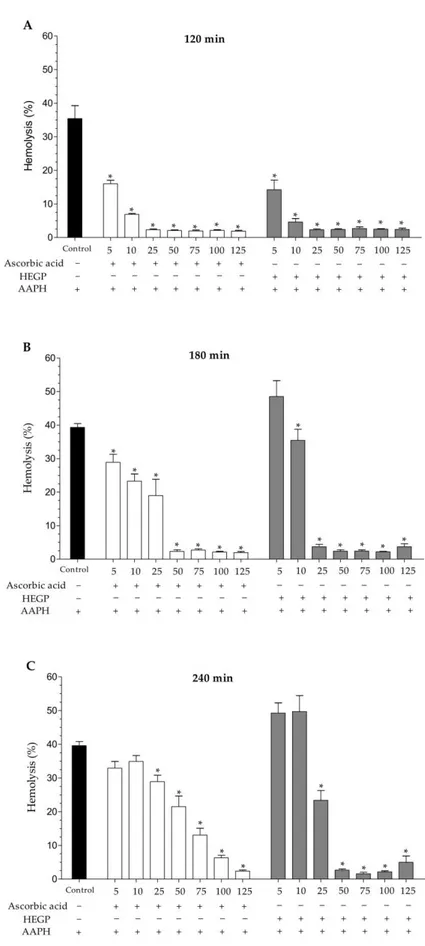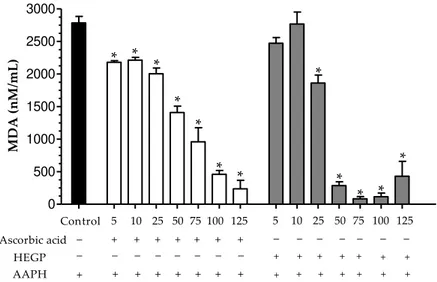Chemical Profile and Antioxidant, Anti-Inflammatory, Antimutagenic and Antimicrobial Activities of Geopropolis from the Stingless Bee Melipona orbignyi
Texto
Imagem




Documentos relacionados
The purpose of this study was to determine the physicochemical characteristics of pollen collected by the Amazonian stingless bees Melipona seminigra and Melipona interrupta ,
In order to evaluate the chemical composition, free radical scavenging activity, and botanical origin, sample of pollen loads from stingless bee, Melipona rufiventris (Uruçu
In this study, we investigated the chemical compositions and antioxidant and antimicrobial activities of propolis produced by the stingless bee Frieseomelitta longipes and the
fieb- rigi has important biological activities, including antimicro- bial, antioxidant, anti-inflammatory, and cytotoxic activity against human erythroleukemia cell, suggesting
Abstract: This study aims to assess the microbiological parameters and the chemical composition of 21 samples of stingless bee pollen (Melipona mandacaia) from two regions of
In the first EPI and SPI correlations with lags (lag –4 to lag 10), the values were negative, showing an inverse relation among the indices, that is, the Equatorial Pacific
Temos maior clareza ainda quanto à relevância do tema, quando a Organização Mundial da Saúde (OMS), trata o período entre 2006 e 2016 como a “Década do Trabalhador

